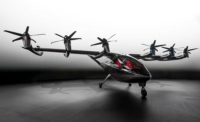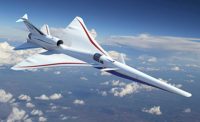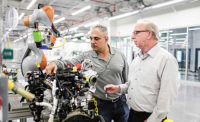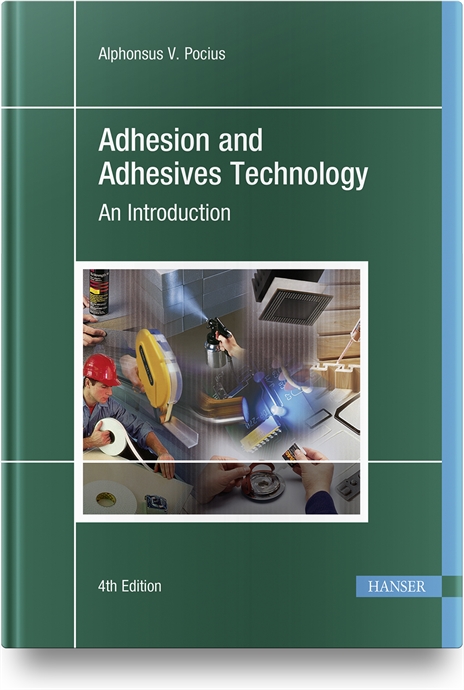NASA R&D Projects Tackle New Aircraft Technologies

Engineers at NASA recently earmarked a couple of emerging technologies that may alter the way aircraft are designed and built in the coming decades. If successful, each could lead to planes that are quieter, more energy efficient and produce fewer emissions.
The Convergent Aeronautics Solutions initiative includes a new process for assembling composite structures and a water-based electricity generation system.
Growing use of carbon-fiber composites will enable aerospace engineers to produce new shapes and designs in the future, such as wings and tails seamlessly blended with the main fuselage in one continuous line. However, joining large aircraft parts made of composite material currently requires rivets and other types of mechanical fasteners, which adds weight and requires thousands of holes to be drilled.
“It would be much better to assemble the composite parts by bonding them together, which in the long run would make an aircraft safer and less expensive to operate and maintain,” says Frank Palmieri, one of the principal investigators of the Adhesive Free Bonding of Composites project.
“While adhesive bonding is quite reliable, there can be scenarios where [it] may not meet the stringent requirements for certification from the FAA,” notes Palmieri. “In a factory setting, when an adhesive is added to a solid surface, there always is some concern of contamination just before the parts are bonded, no matter how much care is taken. So, there always is a possibility that a weak bond is formed.
“And, you can’t inspect it,” adds Palmieri. “There’s no measuring method that exists that can say with certainty how strong your joint is unless you break it.”
Palmieri and his colleagues hope to solve this inspection dilemma. They plan to develop a way to safely and reliably bond composite structures together while minimizing or eliminating the need for traditional fasteners.
“[Our] proposed technique involves how and when two composite structures and a layer of composite laminate material in between them are cured such that the result is one complete, fully bonded, seamless part with no concerns the joint isn’t sound,” says Palmieri.
“This isn’t about making a stronger adhesive or laminate,” Palmieri points out. “We’re trying to make a more reliable and predictable interface between the parts.”
Another NASA R&D project is developing more efficient ways to power electric aircraft without relying on traditional lithium-ion batteries.
“Lithium batteries, in combination with the cables and electronics associated with current power distribution systems proposed for use in future electric-powered aircraft, have proven to have some safety and operational risks associated with them,” says Kurt Papathakis, principal investigator for the Aqueous, QUick-charging battery Integration For Electric flight Research (AQUIFER) project.
“This includes concerns about battery fires, the mass and volume needed for energy storage, managing heat loads, electronic noise from long power cables interfering with onboard systems, and logistics related to recharging the batteries between flights,” adds Papathakis.
“The answer to many of these issues might be found by using a specific type of electric motor that is powered by a water-based, iron-infused solution instead of batteries,” claims Papathakis. “Combining those two technologies together for the first time in an aviation setting is the central idea behind AQUIFER.”
The new type of electric motor is called a “rim motor.” Instead of turning a central shaft, energy is applied to the outer perimeter of a spinning propeller or fan. This requires less torque, reduces drag and can reduce noise.
“Use of the rim motor becomes even more ideal when controlled with the proposed power source, which is known as a flow battery,” says Papathakis.
“In the case of AQUIFER, the flow battery includes two supplies of a water-based solution, each stored in their own tank,” explains Papathakis. “In both tanks, the water is infused with a high concentration of very tiny iron particles and proprietary material.”
Looking for a reprint of this article?
From high-res PDFs to custom plaques, order your copy today!







